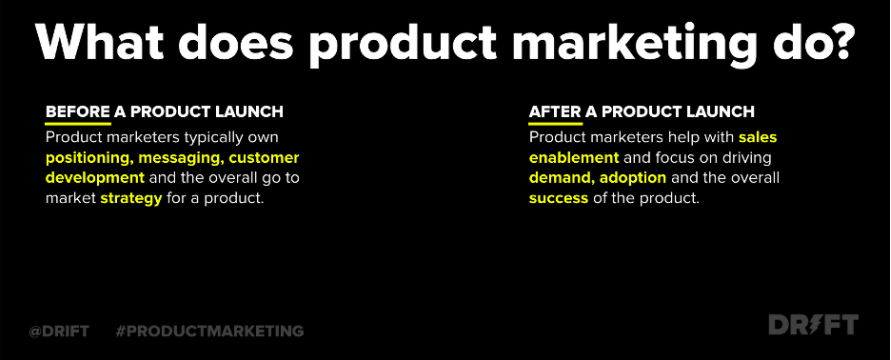When products do well, it is a combination of factors such as a well-planned marketing and sales strategy, the product itself, the pricing, targeting the right segments at the right time, and the team and leadership of course.
In the recent years, a lot of content strategy discussions have focused on content’s role in the product—the content that makes a product and is part of the product interface and architecture. This is why we see new roles in content design, UX Writing, and in content analysis (in data domain products). We saw how content strategy and content design teams in Shopify, Facebook, Intercom, Dropbox, Slack, and many others shared the stories of planning and designing the right content in these products for usability, customer-centricity, interactions, experience, and for the product and organization goals.
The scope of product content strategy is much beyond its impact on the product. For example, product marketing is an important business function who works with the product and the content keeps these two functions so interested in each other’s work.
What product marketers do
- In Intercom, they design the landing pages (source, an Intercom blog post).
- They design the SaaS pricing pages (I wrote about it—content strategy for SaaS pricing pages).
- They work with the demand generation teams to plan the campaigns life cycle—which includes designing the content, the message, and the CTA.
Tomasz Tungug says—”Many times, the product marketers (PMs) build the product as quickly as possible to establish product/market fit. In contrast, the product marketing managers (PMM) answer critical questions about the company, product, and market to ensure the product sells.”
In startups and in the fast growing product teams, product marketing is getting the due attention but there is not enough clarity on how they can get started with the right frameworks for product messaging, product vision, and to keep it aligned with the product strategy. This is where product content strategy plays an important role.
Product marketing is heavy on talking about the product, the pitch, product value proposition, product vision, and its role and space in the customer journey. Product marketers plan their work in the context of why should customers care to sign up and use the product, for whatever goals they have.
Drift describes the role of product marketing at two different stages.

Product marketers work with sales teams, and with people in research and analysis; and they check in with the product team to see how their campaigns bring the audience to the real product experience. Sometimes I am curious to know how they get started. For example:
- How do they start with the words? How do they pick the vocabulary and align it with brand voice and tone?
- How do they craft the most important message in the pitch?
- How they set up the boundaries between storytelling and direct selling?
- How they build the message for the consumer sentiment?
- How they package and design the message?
- Who architects the messaging-communication cycle within the organization?
- Who validates their message or who defines the criteria to validate their early versions in the messaging?
Product content strategy builds the structure for product marketing
The first steps in the strategic brand narrative are the foundations of the product marketing.
Positioning. Messaging. Customer development. Remixing customer journey. Sales enablement. Demand generation. Adoption (in product onboarding).
Can you think of any of these phases or deliverables without the role of content—the strategic product content?
Product content strategy gives the product-centric and strategically designed content to the product marketers and they can use, reuse, repurpose, and redesign it for their specific goals and campaigns, for different channels, segments, languages, and for a personalized messaging workflow. It brings the structure and the assurance in the product marketing work. If you see a few examples of how product marketing helps Miro, Monday, Zapier, and Zendesk for their product goals, you can imagine how product content strategy really elevates the product marketers’ work for efficiency and the speed in operations.
Content strategy brings product marketers closer to the product for the message that lives outside the product and for the onboarding content that is part of the product. It unifies their understanding of the role of content, and it sets up the right momentum and the right confidence in the teams that they can watch each others’ work and success. They are more prepared to change or switch plots or gears, when required.
Product content strategy, product marketing, and sales enablement
When product content strategy informs product marketing, it strengthens the sales enablement process. Since product content is foundational to the design and UX and since design is sales-enablement, there is no better alliance than product content strategists working with product marketers.
In a lot of ways, content strategy means operationalizing everything in content design, UX writing, product marketing, and brand positioning.
— Vinish Garg 🎗 (@vingar) October 26, 2021
—
This topic is part of my advanced course in product content strategy, content design, and UX Writing. See the course details for how we can find and add more meaning to our work.
